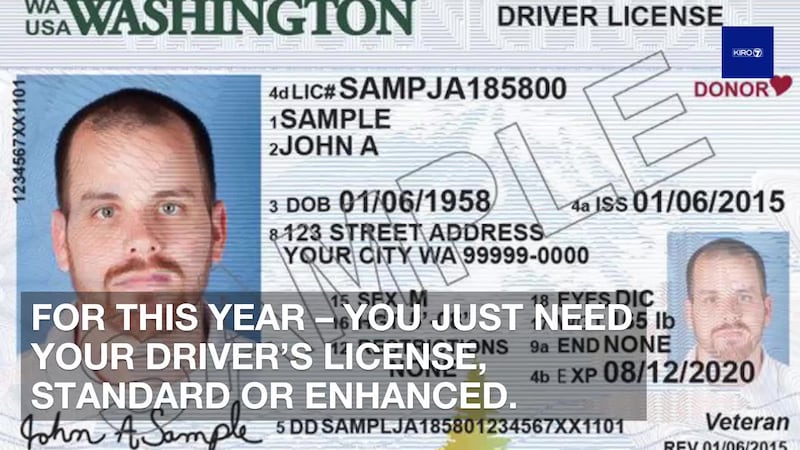SEATTLE, Wash. — For years, Washington residents have expressed confusion over whether their driver’s licenses will get them through Transportation Security Administration checkpoints in the near future.
The concerns stem from a complicated federal law passed after the 9/11 terrorist attacks to bring better security at airports, and Washington state is still working to get into compliance.
Further, many residents have expressed they don’t fully understand the licensing system in Washington state.
Gov. Jay Inslee last year signed a law to create a two-tier licensing system, in an attempt to get in compliance. This bill is under review with Department of Homeland Security.
Some state lawmakers believe the new law doesn’t go far enough to require proof of legal presence and others argue the licenses could lead to discrimination.
Under the new two-tier system, standard licenses will be marked as noncompliant in July 2018. The state and its residents will rely on enhanced licenses.
Basically, the solution in Washington is that people will have to choose which form of identification they want.
So, Washington state offers two IDs: a standard ID, which does not require proof of residency, and an enhanced ID, which does require proof of residency. After 2020, a standard ID alone won’t get you through TSA checkpoints.
A standard ID costs $54 for six years, and an enhanced ID costs $78 for six years.
From 2015 to 2016, there was a 56 percent increase in people getting enhanced driver’s licenses. But the Department of Licensing issued standard licenses to 305,368 people in 2016, and enhanced licenses to 122,541 people.
As 2017 progressed, more people got getting standard licenses than enhanced licenses. The DOL told KIRO 7 News it’s going to soon begin a public information campaign to explain the difference between the two licenses.
How to prepare yourself for the change:
- How's Washington state fixing its out-of-compliance standard licenses?
- Passport to fly domestically? What Washington residents need to know
- What kind of identification does a Washington resident need to get on a plane?
- How do I get a Washington enhanced driver's license?
- New standard WA driver's licenses still won't get you through airport security after changes
DOWNLOAD THE FREE KIRO 7 NEWS APP HERE
Cox Media Group








